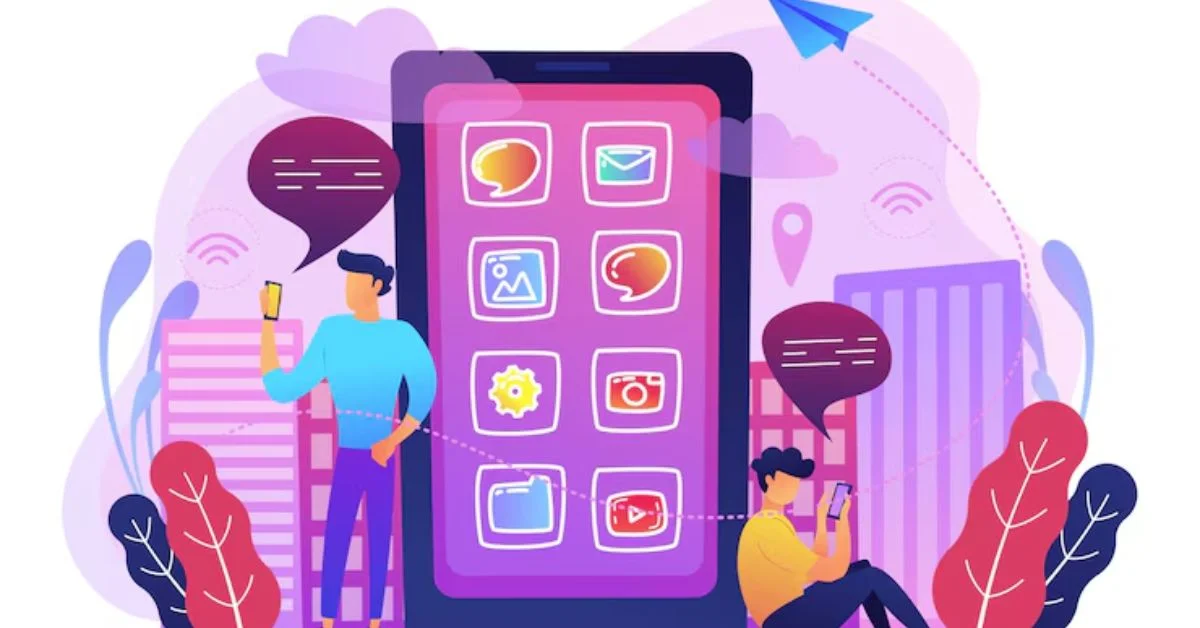The modern mobile ecosystem is a paradox. On one hand, it’s easier than ever to build an app—frameworks abound, toolkits are everywhere, and developer communities are rich with open-source support. On the other hand, building a successful app that scales from a “garage idea” to a “global product” is harder than ever. This challenge is precisely where the Garage2Global methodology steps in.
Garage2Global is not just a development approach. It is a philosophy and framework for transforming early-stage mobile ideas into market-ready, scalable, and sustainable apps. Whether you’re a solo developer, a lean startup, or a technical founder with product vision, Garage2Global offers a roadmap from raw concept to real-world execution.
In this guide, we explore in detail what it means to build a mobile app with Garage2Global, how the method is structured, and what lessons, tools, and disciplines are embedded in its DNA. This article is designed to provide you a full breakdown of this approach—strategic, technical, and organizational.
What Is Garage2Global?
Garage2Global (G2G) is a modular framework for mobile app development that blends lean startup thinking, agile engineering, and platform-first principles. Originally formulated to bridge the gap between indie developers and enterprise product strategies, it has become a leading approach for startup teams aiming for global scalability from day one.
Unlike traditional development models, Garage2Global doesn’t treat app development as a linear coding project. Instead, it emphasizes ecosystem readiness, scalable architecture, and go-to-market adaptability.
It breaks the mobile journey into six progressive stages, each with distinct goals, deliverables, and success metrics.
The Six Stages of the Garage2Global Framework
1. Garage Stage – Foundational Discovery
This is where every app starts—not with code, but with questions. The Garage stage is focused on idea validation, problem definition, and user empathy. It’s about understanding the gap you’re trying to fill.
Key Elements:
- Problem-Solution Fit Canvas
- User Persona Mapping
- Competitor Benchmarking
- Mockups (Not MVPs)
- Tech Feasibility Audit
Objective: Prove that the problem exists and that your idea addresses it in a unique and scalable way.
2. Build Stage – Functional MVP Creation
The Build stage is where concepts become clickable. Unlike conventional MVPs that are bloated or misaligned, G2G MVPs are minimalist but complete in intent. The key is to build a version of your app that solves one specific problem really well.
Key Practices:
- Agile 2-week sprints
- Lean UX integration
- Backend-lite architecture (Firebase, Supabase, etc.)
- 3-layer feedback loop: user, tech, and business
Objective: Launch an MVP that validates one core feature with measurable usage.
3. Adapt Stage – Market Feedback Loop
After releasing your MVP, the real work begins. The Adapt stage emphasizes continuous learning, where you track, test, and pivot based on user behavior—not founder bias.
Focus Areas:
- Event-based analytics (Mixpanel, Amplitude)
- Heatmaps and session recordings
- A/B testing on feature sets
- Customer support-as-feedback
Objective: Understand what your users value, ignore, or misunderstand. Adapt your UX and feature roadmap accordingly.
4. Scale Stage – Engineering for Growth
Once product-market fit is sensed (not declared), the Scale stage begins. Here, the architecture must evolve from MVP to multi-environment readiness. You engineer for reliability, performance, and redundancy.
Key Upgrades:
- Modularized codebase
- API orchestration and caching
- CI/CD pipelines (GitHub Actions, Bitrise)
- Load testing and security compliance
Objective: Prepare your app for a 10x increase in usage without degradation in experience.
5. Global Stage – Platform Expansion & Localization
At this point, your app is stable, and user adoption is climbing. The Global stage is where the garage idea becomes a platform. It’s not just about translation, but contextualization: cultural fit, legal compliance, and payment gateway diversity.
Components:
- Localization of language, UX, currency
- Regional cloud infrastructure
- Multi-platform parity (iOS, Android, Web)
- International marketing playbooks
Objective: Build a version of your app that feels native in every market it enters.
6. Loopback Stage – Systemic Optimization
Unlike traditional models that end after launch, Garage2Global loops back. The Loopback stage is where your mature product learns from itself. Data mining, architecture refactoring, and second-gen feature planning dominate this phase.
Focus Areas:
- User segmentation and lifetime value analytics
- Codebase health audits
- Rebuilding versus refactoring debates
- Feature sunsetting and innovation backlog
Objective: Turn the product into a self-improving ecosystem—ready for new launches, spin-offs, or acquisitions.

Why Choose Garage2Global for Mobile App Development?
1. Clarity Over Chaos
Most apps fail due to chaotic development—no clear stages, undefined goals, and mixed metrics. G2G forces a structured rhythm that reduces friction between teams.
2. Product + Platform Thinking
Instead of building isolated features, Garage2Global encourages platform logic from day one—APIs are treated as first-class citizens, not afterthoughts.
3. Resilience to Pivot
Whether it’s a UI overhaul or a complete business model change, G2G’s modular architecture means you pivot, not collapse.
4. Founder-Centric Design
Garage2Global was created with the early founder in mind—its tools, templates, and timelines are startup-realistic.
The G2G Technology Stack: Recommended Tools
While Garage2Global is tech-agnostic, certain tools have proven repeatedly effective across its stages.
| Category | Recommended Tools |
|---|---|
| Design & Prototyping | Figma, Sketch, Adobe XD |
| Frontend (Mobile) | React Native, Flutter, SwiftUI |
| Backend | Firebase, Supabase, Node.js |
| CI/CD | GitHub Actions, Bitrise, CircleCI |
| Analytics | Amplitude, Mixpanel, Google Analytics |
| CRM/Support | Intercom, Crisp, Zendesk |
| Testing & QA | BrowserStack, TestFlight, Postman |
The key is not to over-tool in early stages. Tools should match your stage, not your aspirations.
Success Stories Using Garage2Global
1. MedBridge Mobile
An independent founder in Nairobi used the G2G framework to launch a telehealth app tailored for rural communities. Starting with just one feature—doctor scheduling—the app expanded globally with multilingual support and AI-based symptom triaging.
2. LearnLoop
An education app that began as a student’s side project scaled using G2G’s Scale and Global stages. Within 18 months, it had active users in 27 countries and partnerships with schools in 5 regions.
3. QueueLess
A retail automation app used G2G to move from a garage prototype to a fully funded platform, now used in over 300 malls worldwide.
Developer Mindset in Garage2Global
Success with Garage2Global isn’t just about process—it’s about mindset:
- Think like a platform architect, not just a coder.
- Let users guide, not define, your roadmap.
- Be skeptical of your features and in love with your users.
- Ship fast, learn faster.
Common Mistakes to Avoid
- Skipping the Garage stage: Jumping straight into development without clear validation wastes time and energy.
- Overbuilding the MVP: Complexity is not a virtue at launch.
- Ignoring analytics in the Adapt stage: What you don’t track, you can’t improve.
- Delaying scalability decisions: Your app should not break the moment you get attention.
- Treating localization as translation: Cultural fluency beats language accuracy.
Conclusion
Building a mobile app with Garage2Global is not about shortcuts—it’s about direction. It transforms app development from an uncertain journey into a strategic sequence of validated steps. In an industry filled with premature scaling and haphazard pivots, Garage2Global offers a blueprint grounded in realism, rigor, and user value.
Whether you’re building your first MVP or scaling to your first million users, Garage2Global provides the structure, mindset, and methodology to navigate each phase with clarity. It’s more than a framework—it’s a full-spectrum evolution for any app destined to grow beyond the garage.
FAQs
1. Is Garage2Global only for startups?
No. While it’s optimized for startups, enterprise teams use it to incubate new products with startup agility.
2. How long does each stage take?
It depends on your resources, but typically:
- Garage: 2–4 weeks
- Build: 4–6 weeks
- Adapt: Ongoing
- Scale: 1–2 months
- Global: Market-dependent
- Loopback: Continuous
3. Do I need technical co-founders to apply this?
Not necessarily. G2G is designed to be founder-friendly and can work with no-code tools early on.
4. Can this work for enterprise apps?
Absolutely. Garage2Global can be adapted for in-house digital product lines or innovation divisions within large companies.
5. What’s the biggest benefit of using G2G?
Clarity. You know what to build, when, why, and for whom—before you write the first line of code.
For more information, click here.









